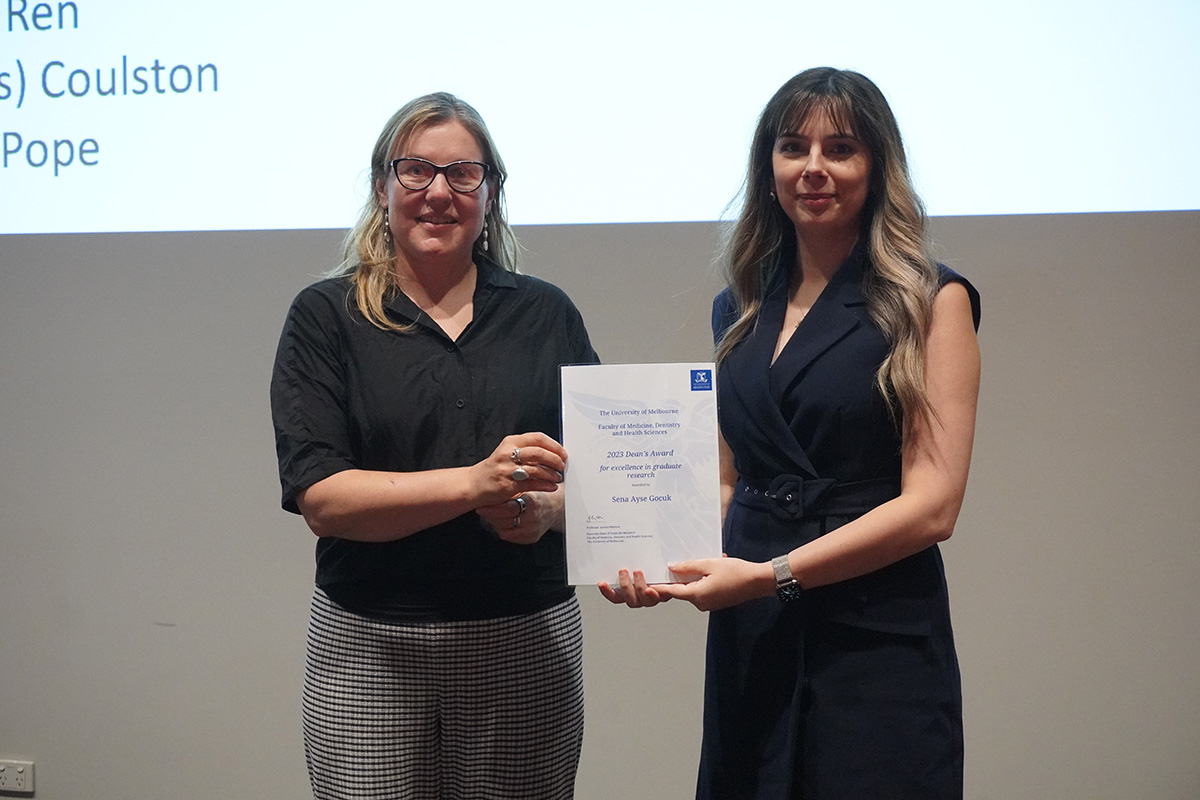Research
Women at risk of passing vision loss to their children lack support
A global survey of female carriers of genetic eye diseases has shown a lack of counselling and support for women at risk of passing the conditions onto their children.
A new global survey has found women at risk of passing on genetic eye diseases to their children experience a lack of counselling and support.
The study by Sena Gocuk, Clinical Research Coordinator at the Centre for Eye Research Australia and PhD student at the University of Melbourne, is the first worldwide survey of female carriers of X-linked inherited retinal diseases (IRDs).
Gocuk’s research, published in Clinical Genetics, has shown that female carriers of X-linked IRDs experience feelings of guilt, concern and anxiety for potentially passing down the disease-causing gene to future generations, but few reported receiving counselling or family planning advice.
It also revealed they have a strong interest in participating in research for future treatments.
X-linked IRDs such as choroideremia and X-linked retinitis pigmentosa typically affect males.
Women generally experience few symptoms, but if they are a carrier of the condition they can pass the disease on to their children.
“Until now inherited retinal disease carriers haven’t been tested for their knowledge, opinions, emotions or experiences about being told they have the condition,” says Gocuk.
“This is the first study looking at carriers of X-linked IRDs, and the first comparing different regions from a global perspective.”
X-linked conditions
X-linked IRDs are associated with genes in the X-chromosome, which is typically passed down to a person by their parents.
For males who have one X-chromosome, the symptoms can be quite severe.
However, females have two X-chromosomes. This means that female carriers can have one chromosome with the genetic mutation and one healthy version.
Generally, this means that the gene mutation doesn’t always cause visual symptoms.
It was believed that most female carriers of X-linked IRDs would not have vision problems, but research in recent years has shown this is not the case.
“Female carriers actually present with a spectrum of retinal disease – some have significant vision loss or even legal blindness, while in others the condition is so mild, they may not ever realise they have it,” says Gocuk.
“In these cases, it can come as a shock when they find out they are a carrier for the disease only after having an affected child.”
Most carriers identified with feelings of guilt (70%), concern (91%), and anxiety (88%) for their child, but very few in the survey reported receiving psychological counselling or family planning advice.
“Genetic testing and genetic counselling can really help guide carriers through family planning, so they can make informed decisions,” says Gocuk.
“We also found that 78 percent of respondents believed gene therapy should be available for female carriers of X-linked IRDs, showing the impact these conditions have on individuals and their motivation to save their sight,” says Gocuk.
Her research also highlighted some important differences between countries, particularly when people found out they were a carrier.
“In the US, women generally found out in their 20s they were a carrier, whereas Australia women were in their late 30s.
“In terms of starting a family, the younger you find out the better, so that you can plan ahead and make informed decisions.”

Award winning work
Gocuk was recently awarded the Dean’s Award for Excellence in Graduate Research by the University of Melbourne Faculty of Medicine, Dentistry and Health Sciences.
The award recognises outstanding graduate research in the Faculty and is a prestigious accolade of Gocuk’s work and impact.
Gocuk hopes her work may help lay the groundwork for providing carriers of X-linked IRDs more support and opportunities, including potential therapeutic treatment trials such as gene therapy.
“While not every carrier will be eligible for treatment, this research shows many would certainly consider being involved and might benefit from future therapies.”
Read the research
Gocuk et al, Perspectives of carriers of X-linked retinal diseases on genetic testing and gene therapy: A global survey, Clinical Genetics (2024) https://doi.org/10.1111/cge.14442
Vale Harold Mitchell AC
CERA is saddened by the passing of philanthropist Harold Mitchell on 10 February 2024.
Sena Gocuk is one of 40 PhD students and early career researchers at CERA whose research has been supported by a Harold Mitchell Postgraduate Travelling Fellowship since 2007. These fellowships provide a vital source of funds for emerging researchers to forge global links and expand their careers in medical research.
Harold Mitchell had an indelible impact on CERA and was a passionate advocate for the eye health of Indigenous Australians.
The Harold Mitchell Foundation supported the partnership between CERA and the University of Melbourne to publish the National Indigenous Eye Health Survey in 2009 – and also the transformational work of our founder Professor Hugh Taylor AC when he moved to his new role as Melbourne Laureate Professor and Harold Mitchell Chair of Indigenous Eye Health at the University of Melbourne in 2008.
We are grateful for his enormous contribution to advancing vision research and closing the eye health gap for Indigenous Australians.
